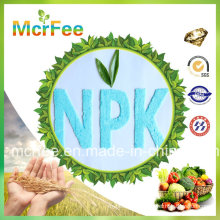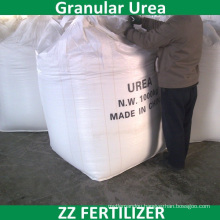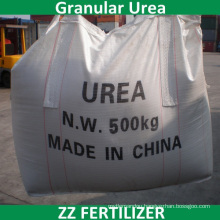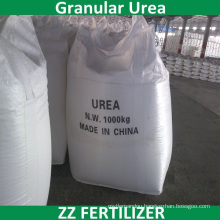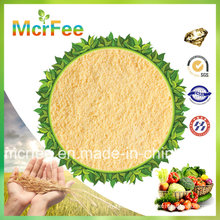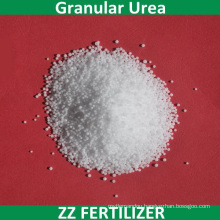Sodium hydroxide (caustic) packaging requirements
2021-05-17
NaOH solids dissolve in water and emit heat; also known as Caustic Soda, caustic soda, caustic soda, is a common, important base, the English name sodiun hydroxide (alias Caustic soda).
Chemical formula NaOH
Formula 40.01. Density 2.130 g/cm3, melting point 318.4°C, boiling point 1390°C. Pure anhydrous sodium hydroxide is a white translucent, crystalline solid. Sodium hydroxide is very soluble in water and its solubility increases with increasing temperature, and it releases a large amount of heat when dissolved. Its aqueous solution has astringent and creamy feel, the solution is strongly alkaline, and has all the basic properties of alkali. Commercial caustic soda has two kinds of solid and liquid: pure solid caustic soda is white, block, sheet, rod, granular, brittle; pure liquid caustic soda is colorless and transparent liquid. Sodium hydroxide is also easily soluble in ethanol and glycerine; but it is insoluble in ether, acetone, and liquid ammonia. It has a corrosive effect on fibers, skin, glass, ceramics, etc. It will give off heat when dissolved or concentrated solution is diluted; Neutralization reaction with inorganic acid can also generate a lot of heat, resulting in corresponding salts; with metal aluminum and zinc, non-metal Reactions such as boron and silicon release hydrogen; disproportionation occurs with halogens such as chlorine, bromine, and iodine. It can precipitate metal ions from aqueous solution into hydroxides; it can make saponification reaction of oils and fats and produce corresponding sodium salts and alcohols of organic acids, which is the principle of removing oil stains on fabrics.
The use of sodium hydroxide is very extensive. In chemical experiments, besides being used as a reagent, since it has a strong hygroscopicity, it can also be used as an alkaline desiccant. Caustic soda is widely used in the national economy and many industrial sectors require caustic soda. The department that uses the most caustic soda is the manufacture of chemicals, followed by the manufacturing of paper, aluminum, tungsten, rayon, rayon and soap. In addition, in the production of dyes, plastics, pharmaceuticals and organic intermediates, the regeneration of old rubber, the production of sodium metal, water electrolysis, and the production of inorganic salts, the preparation of borax, chromium salts, manganese salts, phosphates, etc. must also be used. A lot of caustic soda. Industrial sodium hydroxide should meet the national standard GB 209-93; industrial ion exchange membrane method sodium hydroxide should meet the national standard GB/T 11199-89; chemical fiber sodium hydroxide should meet the national standard GB 11212-89; edible hydrogen Sodium oxide should meet the national standard GB 5175-85.
In industry, sodium hydroxide is commonly referred to as caustic soda or caustic soda and caustic soda. This is because the thicker sodium hydroxide solution splashes on the skin and can corrode the skin and cause burns. It has a solubilizing effect on proteins and is highly irritating and corrosive. With a 0.02% solution instilled into rabbit eyes, corneal epithelial damage can be caused. Intraperitoneal LD50: 40 mg/kg in mice and oral LDLo in rabbits: 500 mg/kg. Dust irritates the eyes and respiratory tract and erodes the septum; splashes on the skin, especially on the mucous membranes, can produce soft palate and can penetrate into deep tissues and leave scars after burns; splashes into the eyes not only damage the cornea, but also deepens the eyes. Tissue damage, severe cases can cause blindness; misuse can cause gastrointestinal tract burns, cramps, mucosal erosion, vomiting bloody stomach contents, bloody diarrhea, sometimes dumbness, dysphagia, shock, perforation of the digestive tract, can occur later Intestines narrow. Because of its strong alkalinity, it can cause pollution to water bodies and attention should be paid to plants and aquatic organisms.
“Administrative Regulations on the Safety Management of Chemical Hazardous Substances (promulgated by the State Council on February 17, 1987)”, “Rules for the Implementation of Regulations on the Safety of Chemical Hazardous Materials (Chemical Labor [1992] No. 677)”, “Safety regulations for chemicals in the workplace” ([ 1996] Law of the Ministry of Labour issued No. 423) and other laws and regulations have made corresponding provisions for the safe use, production, storage, transportation, loading and unloading of chemical dangerous goods. Classification and Marks of Commonly Used Hazardous Chemicals (GB 13690-92) The substance was classified as the 8.2th type alkaline corrosion product; "Safety Technical Regulations for Production of Caustic Soda by Membrane (HGA001-83)" and "Safety Technical Provisions for Production of Caustic Soda by Mercury (HGA002-83)" were specifically stipulated.
When heavy caustic soda is exposed, protective equipment should be worn, and overalls or work caps should be made of cotton cloth or suitable synthetic materials. When operating personnel must wear work clothes, masks, protective glasses, rubber gloves, rubber aprons, rubber boots and other labor insurance supplies. Neutral and hydrophobic ointments should be applied to the skin. When contacted with flake or granular caustic soda, the workplace shall be provided with a ventilation device. The maximum allowable concentration in indoor air is China MAC 0.5 mg/m3 (calculated as NaOH), and US ACGIH TLVC 2 mg/m3. You may need to wear a hood-type, powered air filter dust respirator when you may be exposed to dust. Wear an air respirator if necessary. Operators must be specially trained to strictly observe the operating procedures. It is recommended that operators wear hood-type electric air filter dust respirator, wear rubber acid and alkali suits, wear rubber acid and alkali gloves. Keep away from flammable and combustible materials. Avoid dust. Avoid contact with acids. It should be lightly loaded and unloaded during handling to prevent damage to the packaging and containers. Equipped with leakage emergency treatment equipment. Empty containers may be harmful residues. When diluting or preparing a solution, alkali should be added to water to avoid boiling and splashing. To deal with leakage, wear protective glasses and gloves, sweep up, slowly pour into a large amount of water, rinse the ground with water, and dilute the sewage into the wastewater system. Alkali solution touches the skin and can be washed with 5-10% magnesium sulfate solution; if it splashes into the eyes, it should be washed with plenty of boric acid solution immediately; when it is eaten in small quantity, immediately use vinegar, 3~5% acetic acid or 5% dilute hydrochloric acid, plenty Orange juice or lemon juice and so on, to drink egg white, milk or vegetable oil and quickly seek medical advice, taboo vomiting and gastric lavage.
Solid sodium hydroxide can be packed in a 0.5 mm thick steel drum with a net weight of no more than 100 kg; plastic or double-layer kraft paper bag with full open or middle open steel barrel; threaded glass bottle, iron lid press Ordinary wooden boxes outside glass bottles, plastic bottles or metal drums (cans); threaded glass bottles, plastic bottles or tin-plated steel drums (cans) outside full-bottom lattice grills, fibreboard boxes or plywood boxes; tinned steel sheet drums (cans), metal drums (cans), plastic bottles or metal hose outside corrugated boxes. The packaging container should be complete and sealed and should have obvious signs of "corrosive articles". When transported by rail, steel drums can be transported by gondolas. The packaging should be complete when it is shipped, and the loading should be secure. During transportation, it is necessary to ensure that the container does not leak, does not collapse, does not fall, is not damaged, and is moisture-proof and rain-proof. If any signs such as rust, cracks, holes, or melted water are found in the packaging container, they should be replaced immediately or used as soon as possible. The damaged container can be repaired by soldering. It is forbidden to mix and transport with combustibles or combustibles, acids, edible chemicals, etc. Transportation vehicles should be equipped with leakage emergency treatment equipment. Do not mix and transport with combustibles and acids. In the event of fire, water, sand and various fire extinguishers can be used to extinguish the fire, but firefighters should pay attention to the corrosiveness of the water after it is dissolved in caustic soda.
When storing solid sodium hydroxide in a chemical laboratory, care should be taken to seal the reagent bottle to prevent it from absorbing moisture in the air and deliquescence or reacting with carbon dioxide. Caustic soda can be obtained by electrolyzing salt solution or by reacting sodium carbonate with lime milk.
Sodium hydroxid,with the chemical formula NaOH, is commonly known as caustic soda. It is a strong alkali with strong corrosivity, generally in the form of flakes,pearls or lumps.Industrial grade Caustic Soda contains a small amount of sodium chloride and sodium carbonate, and is white translucent crystal.Its aqueous solution has an astringent and creamy feel.Sodium hydroxide is prone to deliquescent in the air, so solid sodium hydroxide is often used as a desiccant.It is very soluble in water and emits a lot of heat when dissolved. It`s also soluble in ethanol and glycerin.
Sodium hydroxide (NaOH) is extremely versatile. Used in the production of paper, soap, dyes, rayon, metal smelting, petroleum refining, cotton fabric finishing, coal tar product purification, and food processing, wood processing and machinery industries.
The product is a strongly alkaline substance which belong to 8 grade dangerous goods. with strongly irritating and corrosive, dust or smoke can irritate the eyes and respiratory tract, corrode the nasal septum, direct contact between the skin and eyes and NaOH can cause burns, and misuse can cause digestive tract burns, mucosal erosion, bleeding and shock.So it`s highly corrosive and requires the "corrosive item" mark.
Caustic Soda, Caustic Soda Flake, Caustic Soda Chemical, Detergent Caustic Soda
Lemandou Chemicals Co., Ltd. http://www.hncarbonblack.com
